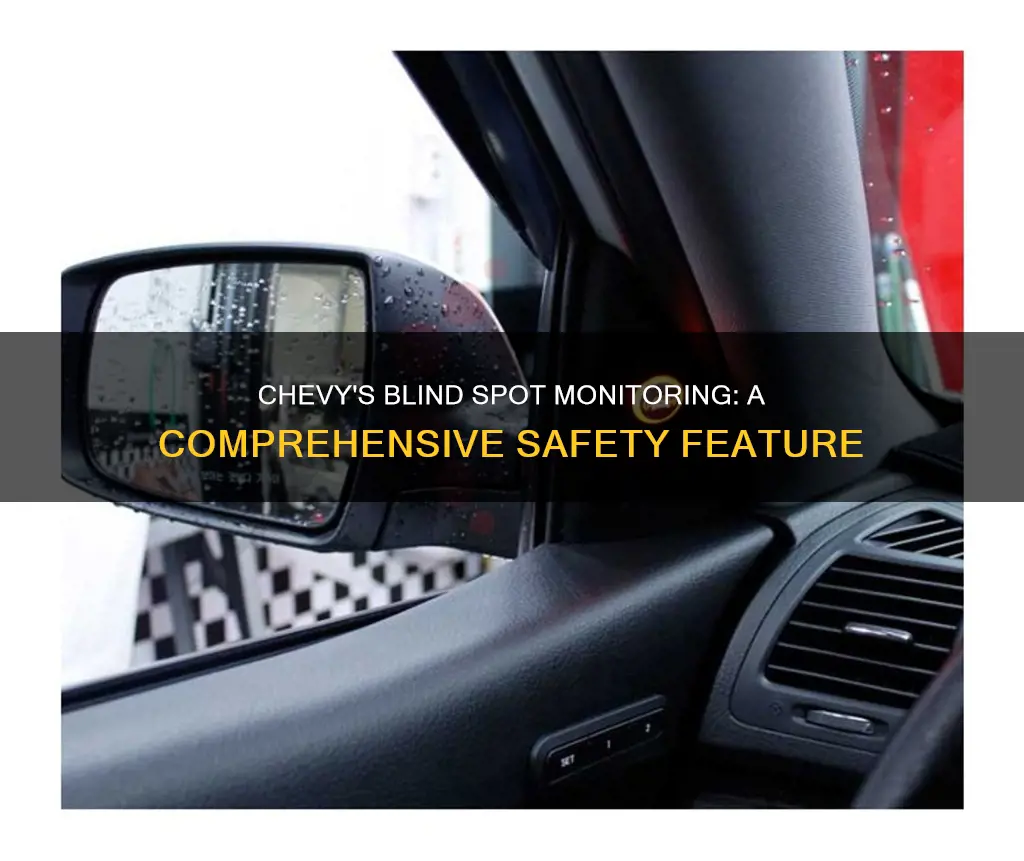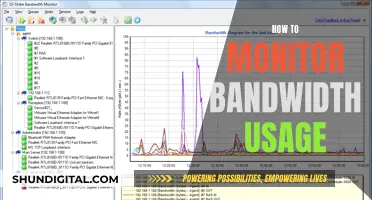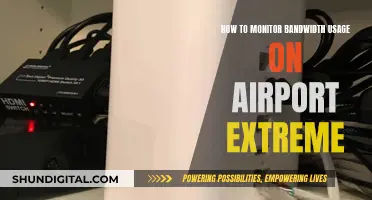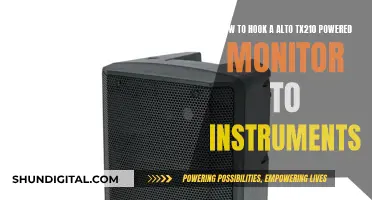
Blind-spot monitoring is a safety feature in vehicles that uses cameras, radar, and/or ultrasonic sensors to detect objects in a vehicle's blind spot. Chevy offers this feature in some of its models, including the Bolt, Colorado, and Silverado. However, some Chevy owners have reported issues with the blind-spot monitoring system, such as false alerts and delayed warnings. The system uses radar sensors located in the rear corners of the vehicle to monitor moving vehicles up to 11 feet (3.5 meters) behind the side mirror. When a vehicle is detected in the blind spot, drivers are typically alerted through visual warnings in the side mirrors or on the front pillars. Chevy's system is called Side Blind Zone Alert, and it provides side-mirror alerts when a moving vehicle is detected in the driver's side blind zone or quickly approaching it.
| Characteristics | Values |
|---|---|
| Name | Side Blind Zone Alert |
| Radar Sensors | Located in the rear corners of the vehicle |
| Alert | Visual side-mirror alerts |
| Alert | Amber warning symbol on the sideview mirror |
| Alert | Flashing warning symbol when the turn signal is turned on |
| Activation | When the vehicle is started |
| Activation | When the feature is turned on after being off in the same key cycle |
| Activation | When a vehicle is detected in the side blind zone |
| Activation | When a fast-moving vehicle is approaching the lane change zone |
| Activation | When the turn signal is turned on in the direction of the detected vehicle |
| Functionality | Does not operate the brakes or steer the vehicle |
| Functionality | Does not detect pedestrians, bicyclists, or electric scooters |
What You'll Learn

How does Chevy's blind spot monitoring work?
Chevrolet's Side Blind Zone Alert technology uses short-range radars located in the rear corners of the vehicle to monitor moving vehicles up to 11 feet (3.5 meters) behind the side mirror, one lane over from both sides of the vehicle. The system only works when the vehicle is in a forward gear.
The driver is warned of a moving vehicle in the side blind zone via a visual amber Lane Change Alert icon in the side mirror. This icon flashes if the driver activates the turn signal in the direction of the detected vehicle, indicating that it may be unsafe to change lanes. It is important to note that the system does not indicate that it is safe to change lanes, and the driver is still responsible for checking mirrors, looking over their shoulder, and using turn signals before making a lane change.
Chevrolet's system does not deliver a Safety Alert Seat vibration or any form of beeping alerts. Instead, it focuses on providing a clear visual indication to the driver through the use of amber warning symbols. When you start your vehicle, you'll see both side-view mirror alerts briefly come on, indicating that the system is working.
The Lane Change Alert and Side Blind Zone Alert are two interconnected features that work together. While the Side Blind Zone Alert notifies you of a vehicle currently in your blind zone, the Lane Change Alert specifically alerts you to fast-approaching vehicles that will soon enter your blind zone. This two-pronged approach enhances the driver's awareness of their surroundings and helps to avoid potential collisions during lane changes.
It is worth noting that the system may occasionally light up a warning indicator due to non-moving objects such as guardrails, signs, trees, or shrubs. Additionally, under poor weather or low-visibility conditions, the system's performance may be impacted. To ensure optimal functioning, it is crucial to keep the sensor areas in the rear bumper clear of any obstructions like dirt or snow.
Blind Spot Monitors: DIY Installation and Setup Guide
You may want to see also

What are the pros and cons of Chevy's blind spot monitoring?
Chevrolet's Side Blind Zone Alert is a driver-assistance technology that provides side-mirror alerts to help the driver avoid crashing into a vehicle in their side blind spot or zone during a lane change. The system uses short-range radars located in the rear corners of the vehicle to monitor moving vehicles up to 11 feet (3.5 meters) behind the side mirror, one lane over, on both sides of the vehicle. When a vehicle is detected in the driver's blind spot, an amber warning symbol lights up on the side-view mirror on the side where the system has detected the vehicle. If the driver then turns on their turn signal in that direction, the warning symbol flashes as an extra warning not to change lanes.
Pros of Chevy's Blind Spot Monitoring:
- The system can help drivers avoid lane-change collisions by alerting them to vehicles in their blind spots.
- The system uses hidden radar sensors in the rear corners of the vehicle, so it is discreet and does not obstruct the driver's view.
- The system provides both visual and auditory alerts, making it more likely that the driver will notice the warning.
- The system can detect most motorcycles.
Cons of Chevy's Blind Spot Monitoring:
- The system does not operate the brakes or steer the vehicle; it is an alert system only.
- The system cannot detect pedestrians, bicyclists, or electric scooters.
- The system may give false alerts due to non-moving objects such as guardrails, signs, trees, and shrubs.
- The system may not function as intended under poor visibility conditions or if the sensors are obstructed by dirt or snow.
- Some users have reported issues with false alerts, with the system sometimes failing to detect vehicles in the blind spot or giving alerts when there are no vehicles present.
Monitoring Live WiFi Usage: Archer C7 Guide
You may want to see also

How does Chevy's blind spot monitoring compare to its competitors?
Chevrolet's Lane Change Alert with Side Blind Zone Alert is a driver-assistance feature that uses hidden radar sensors in the rear corners of the vehicle to detect moving vehicles in the driver's blind spot. When the system detects a vehicle in the driver's blind zone, an amber warning symbol lights up on the side-view mirror on the side where the vehicle has been detected. If the driver then turns on their turn signal in that direction, the warning symbol flashes as an extra warning not to change lanes.
Chevrolet's system is similar to those offered by its competitors. For example, Toyota's Blind Spot Monitor (BSM) also uses sensors to detect vehicles in the driver's blind spot and provides visual and audible alerts to the driver. Honda's LaneWatch uses a camera mounted on the passenger-side mirror to provide a live feed of the driver's blind spot on the infotainment screen when the right turn signal is activated.
One advantage of Chevrolet's system is that it provides alerts for both vehicles that are currently in the driver's blind zone and those that are quickly approaching it. This can help drivers avoid lane-change collisions by giving them more time to react. Additionally, Chevrolet's system can detect most motorcycles, which not all competitor systems can do.
However, one limitation of Chevrolet's system is that it does not operate the brakes or steer the vehicle to prevent a collision. Some competitor systems, such as those offered by Nissan and Kia, include this feature. These systems can automatically apply the brakes or steer the vehicle back into its lane if a collision is imminent, even if the driver does not respond to the alerts.
In conclusion, while Chevrolet's blind spot monitoring system offers some advantages over its competitors, it also has some limitations. It is important for drivers to understand the capabilities and limitations of their vehicle's safety features and to remain attentive and drive safely.
The Monitor Conundrum: Mismatched Sizes, Annoying or Advantageous?
You may want to see also

What issues have Chevy owners reported with blind spot monitoring?
Chevy owners have reported several issues with their vehicles' blind spot monitoring systems. One common problem is false alerts, where the system alerts the driver to a vehicle in their blind spot when there is none. This can be caused by various factors, such as trailers, non-moving structures, or even shadows cast by streetlights at night. Some owners have also reported that the system does not alert them to actual vehicles in their blind spots, which can be dangerous.
In addition to false alerts, some Chevy owners have experienced issues with the system not functioning properly or consistently. For example, some have reported that the system only works intermittently, while others have found that it does not work at all in certain conditions, such as when it is dark or under poor weather or visibility conditions. It has also been noted that the system does not detect pedestrians, bicyclists, or electric scooters, which can be a safety concern.
There have also been reports of electrical issues affecting the blind spot monitoring system. For example, some owners have found that the system is affected by problems with the door jamb connectors, particularly on the driver's door. This can cause the system to malfunction and, in some cases, disable the power window and door lock switches. In other cases, issues with the system have been linked to problems with the camera or sensor placement or functionality.
Overall, while Chevy's blind spot monitoring system can be a helpful safety feature, it is important for owners to be aware of its limitations and potential issues. It is crucial for drivers to remain attentive and use their mirrors and turn signals when changing lanes, even when relying on this technology.
Acer Monitor Identification: A Step-by-Step Guide
You may want to see also

How can Chevy owners recalibrate their blind spot monitoring?
Chevy owners can recalibrate their blind spot monitoring by adjusting the sensors in the rear corners of their vehicles. These sensors can be affected by obstructions such as dirt or snow, so keeping the sensor areas clear is important for proper functioning.
In some cases, issues with blind spot monitoring may be related to electrical problems or faulty connections. Chevy owners can try checking the seating of connectors around the doors and ensuring that all connections inside the door are secure. If issues persist, it may be necessary to consult a dealer or refer to the vehicle's equipment list and owner's manual for more information.
It is worth noting that Lane Change Alert and Side Blind Zone Alert are two parts of the same feature and cannot be turned on or off separately. This feature uses radar sensors to detect moving vehicles and provide visual alerts to help drivers avoid lane change collisions. However, it does not operate the brakes or steer the vehicle, so drivers should remain attentive and use turn signals before changing lanes.
Best 32-Inch Gaming Monitors: Ultimate Buying Guide
You may want to see also
Frequently asked questions
Yes, Chevy has a Side Blind Zone Alert feature that provides side mirror alerts to help the driver avoid crashing into a vehicle in their side blind spot during a lane change.
Chevy's Side Blind Zone Alert uses short-range radars located in the rear corners of the vehicle to monitor moving vehicles up to 11 feet (3.5 meters) behind the side mirror. When a vehicle is detected in the driver's blind spot, an amber Lane Change Alert icon lights up on the side mirror. If the driver activates the turn signal in the direction of the detected vehicle, the icon flashes to indicate that it may be unsafe to change lanes.
Chevy's Side Blind Zone Alert is available on vehicles such as the Bolt, Colorado, Silverado, and Canyon.
Yes, Chevy's Side Blind Zone Alert can be turned off through the vehicle settings menu.







